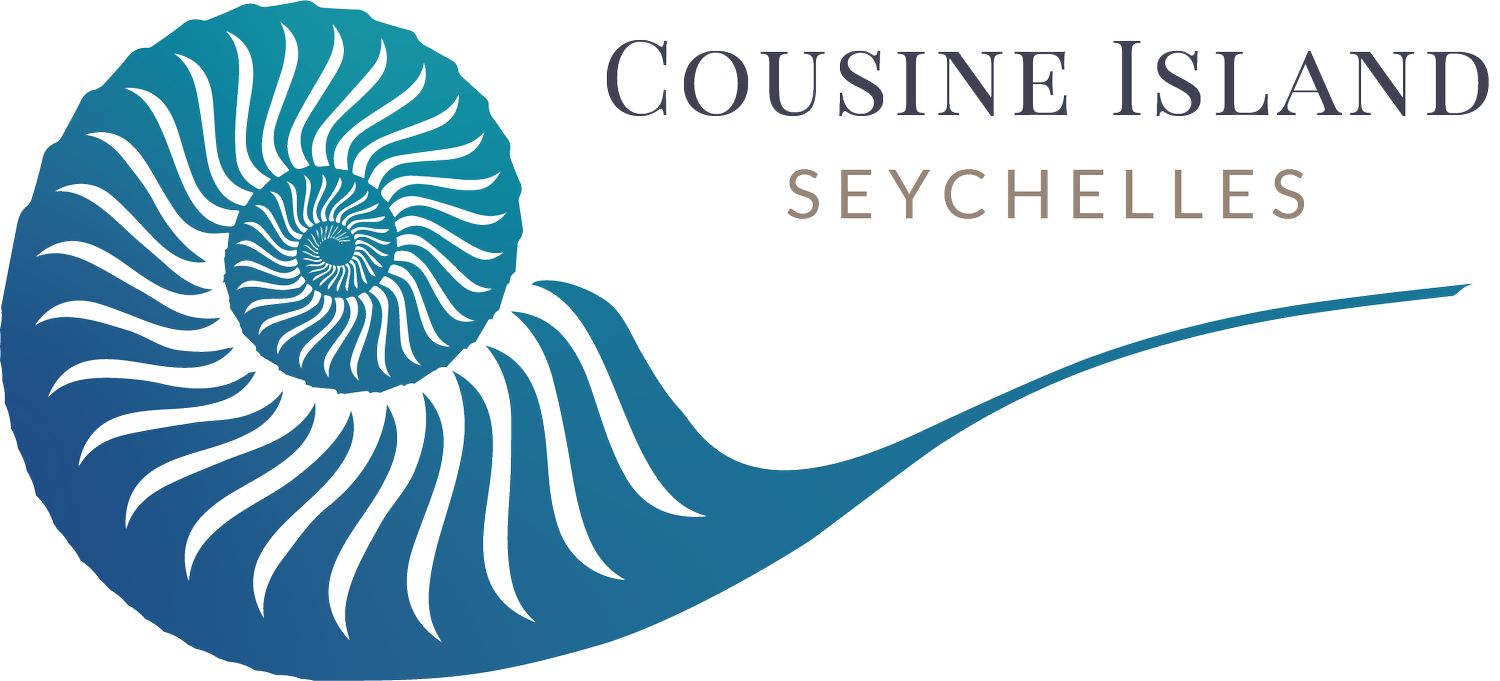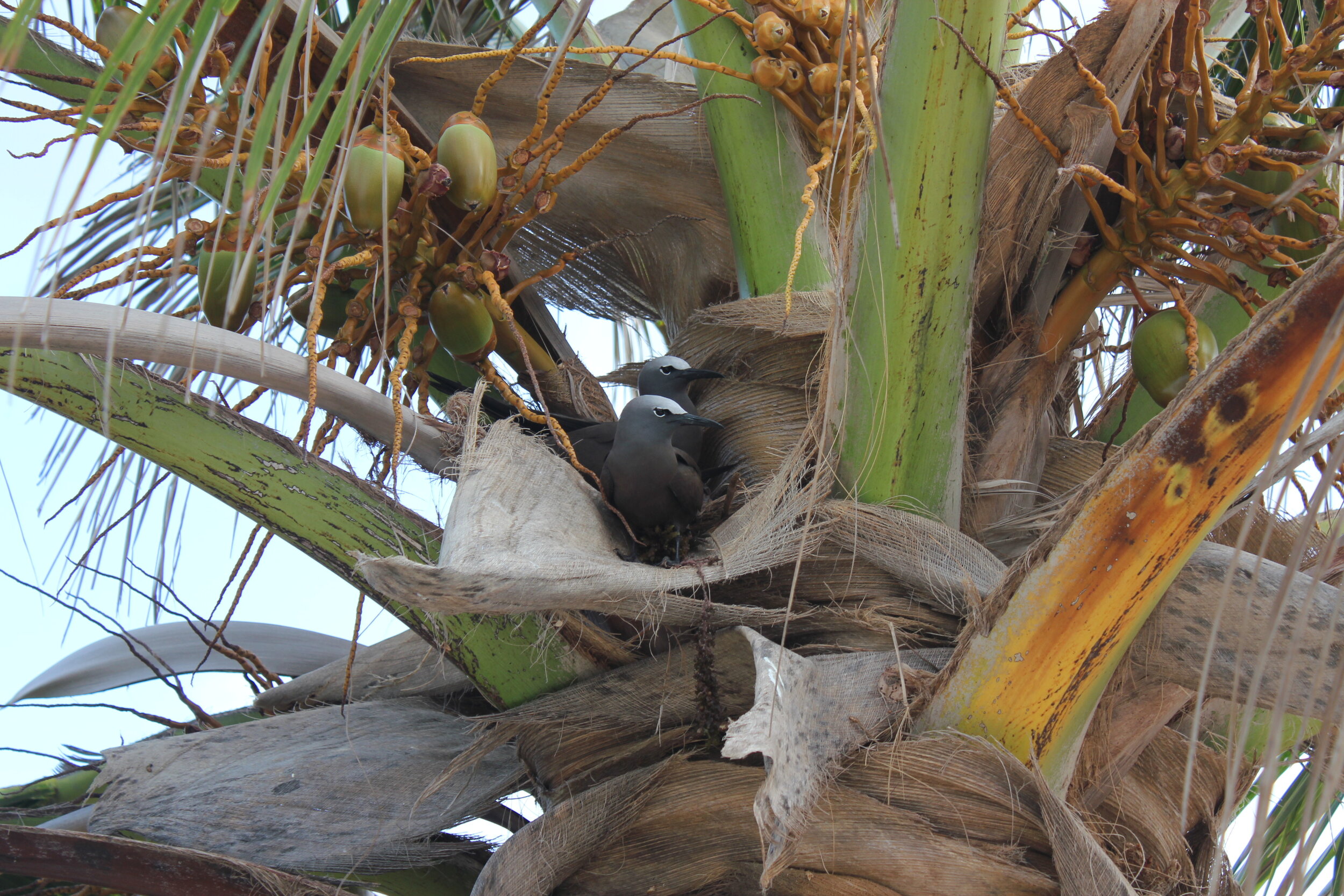Глупый коричневый кивсяк (Anous stolidus)
Видовое название stolidus имеет латинское происхождение и означает "глупый" или "дурачок". Как и у многих других морских птиц, их научное название происходит от имени моряков, которые ели этих птиц и их яйца. Отсутствие контакта с человеком привело к тому, что у птиц не было ни страха, ни инстинкта защищать свои гнезда, что моряки приняли за глупость.
Коричневый кивсяк, известный своим характерным поведением ухаживания, включающим кивки и поклоны, ежегодно посещает остров Кузин. Сезон размножения длится с мая по сентябрь, в течение которого взрослые особи выбирают места для гнездования на кокосовых пальмах или на земле. Хотя они в основном колониальные, обычно гнездятся на возвышенных местах, таких как скалы, низкорослые деревья или кустарники, изредка гнездясь на земле. Каждая размножающаяся пара откладывает одно яйцо в сезон.
Вне месяцев размножения бурые кивсяки ведут преимущественно пелагический образ жизни, редко приближаясь к суше. Они кормятся у поверхности воды, питаясь мелкой рыбой и случайно захватывая добычу, которую поднимают вверх более крупные хищники. На острове Кузин гнездится около 3 000 пар, причем птенцы изначально имеют темную окраску, хотя небольшой процент вылупляется белым, а затем становится коричневым.
Кормление заключается в ловком проплыве над водой, чтобы поймать мелких кальмаров, моллюсков, водных насекомых и рыбу, такую как сардины и анчоусы. Кроме того, они дополняют свой рацион фруктами, особенно с винтовых сосен. Остров Кузин является жизненно важным убежищем для этих очаровательных морских птиц, предлагая орнитологам и любителям природы редкий взгляд на их размножение и экологическую роль в богатом биоразнообразии Сейшельских островов.


